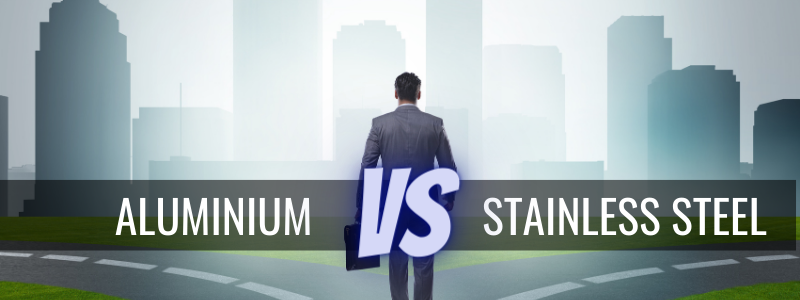Choosing the right materials for a building project can be tricky as there’s much to consider. Looking at the characteristics of aluminium framework and stainless steel it’s easy to see why the decision should not be taken lightly.
Aluminium and stainless steel may have many similarities but it’s what sets them apart that could determine the final decision. Here are the main aspects that you should investigate when planning your construction project.
Sustainability Of Aluminium Framework And Stainless Steel
Considering the move toward more sustainable designs and buildings, aluminium framework and stainless steel are becoming increasingly popular. These building materials are some of the most sustainable in the world thanks to incredible recyclability without losing quality.
Combine this with exceptionally high durability and a long life-cycle, both stainless steel and aluminium are great choices. At PRV Engineering, we try to make a difference by using a scrap management system where we recycle any offcuts and scrap metal that result from production or fabrication.
Which Is Stronger; Aluminium Framework Or Stainless Steel?
It’s easy to assume that steel is the obvious choice when it comes to strength but it’s not quite as simple as that. Steel may be stronger but considering it weighs three times more than aluminium, its strength to weight ratio is worse. That’s why many industries prefer using aluminium, including aerospace, aviation, automotive and bicycle manufacturers among others.
The strength to weight ratio is a vital consideration in terms of handling, transportation and structural load-bearing limits. Considering that 25% of all aluminium produced globally is used in construction, it’s no surprise that you’ll find it in entertainment, trade and exhibition centres. Similarly, stadiums, pools and other sports facilities are also built using aluminium framework or structures.
How About Malleability?
Aluminium is extremely desirable as it’s more malleable and elastic than steel. It’s quite soft and much easier to cut, stretch and manipulate. If your design is more intricate with folds, cuts or bends, you’re better off choosing aluminium than steel, especially for parts with deep and straight walls.
Steel is incredibly tough and resilient but it cannot always be pushed to the same extremes as you could with aluminium framework. More often than not, steel can crack or rip if put under the same stresses as aluminium framework.
Level Of Corrosion
While malleability is important for manufacturing, the greatest attribute of aluminium is the high corrosion resistance. It requires no further treatment as aluminium doesn’t rust which means there is also no paint or coating to wear or scratch off.
As good as that sounds, stainless steel actually has an advantage here as this alloy has added chromium, making up a minimum of 10.5%, which gives it a protective film and excellent corrosion resistance. It’s also non-porous which means it has an even higher level of corrosion resistance.
Recommended: ‘The Difference Between Anodised Aluminium And Stainless Steel Corrosion’
Consider Cost And Material Volume
Cost is always an important consideration when manufacturing any product but it shouldn’t be the deciding factor. Although steel is often cheaper per pound than aluminium, the price of the two constantly fluctuates based on global supply and demand, fuel costs, the price and the availability of iron and bauxite ore.
The cost of raw materials has a direct impact on the price of a finished product which means the aluminium part will almost always cost more. So, when compared by weight, aluminium is more expensive than stainless steel but if you’re looking at material volume, using an aluminium framework is actually a cheaper option.
Is Aluminium Framework Harder To Weld Than Stainless Steel?
Many people might say it’s harder to weld aluminium framework than steel but it involves more than that. As any welding apprentice will tell you, they often practice to weld steel before attempting aluminium. So, besides for training purposes, which is easier?
Stainless steel welding is fairly cost-effective, easier to learn and more forgiving than aluminium welding. The reason for this is that aluminium has a high thermal conductivity which means welds solidify faster. As a result, it requires more skill and cleanliness than an apprentice or junior welder can offer early on in their career.
Recommended: ‘Coded Welding And Bespoke Fabrication’
Steel And Aluminium Framework At PRV Engineering
PRV Engineering work with all types of metals offering a range of architectural and structural steel fabrication. This includes aluminium framework, gates, handrails, staircases, canopies, balustrades, fire escapes, balconies and mezzanine floors among many others.
Our team works closely with several industries such as construction, oil and gas, automotive, aerospace, defence and rail where we provide precision engineering and custom fabrication services. Please visit our website for more information on the wide range of products and services we provide.
For more interesting articles from around the world covering engineering, manufacturing and technology, follow our blog and remember to use the hashtag #PRVtech.


Recent Comments